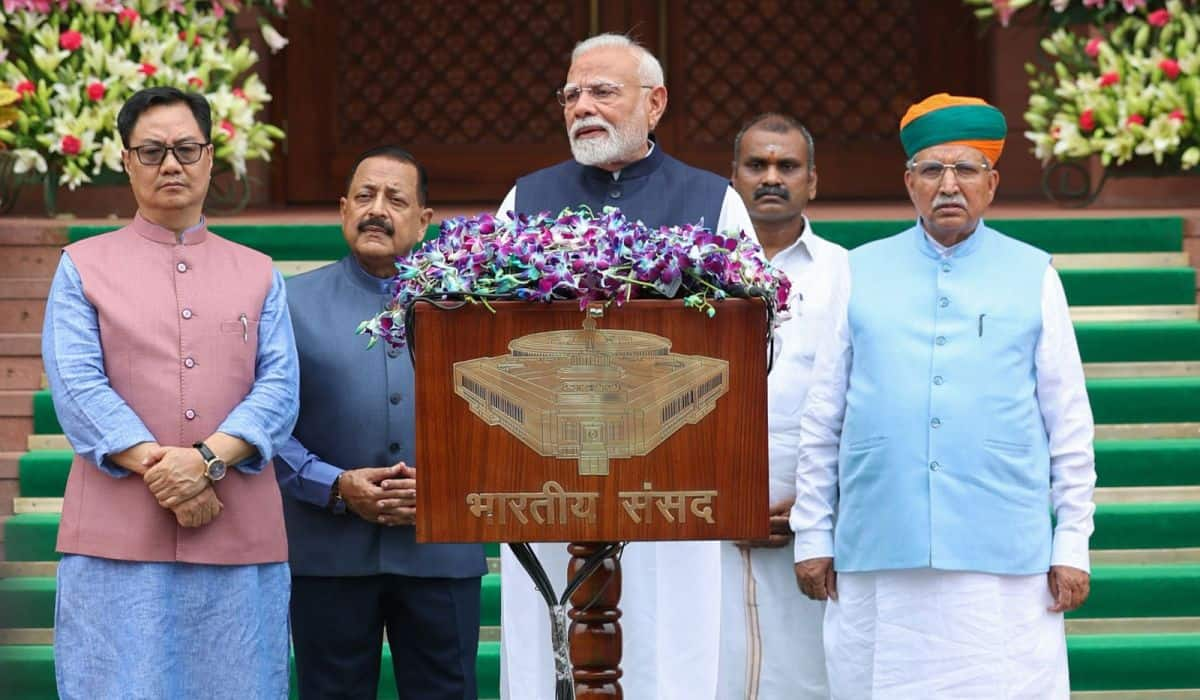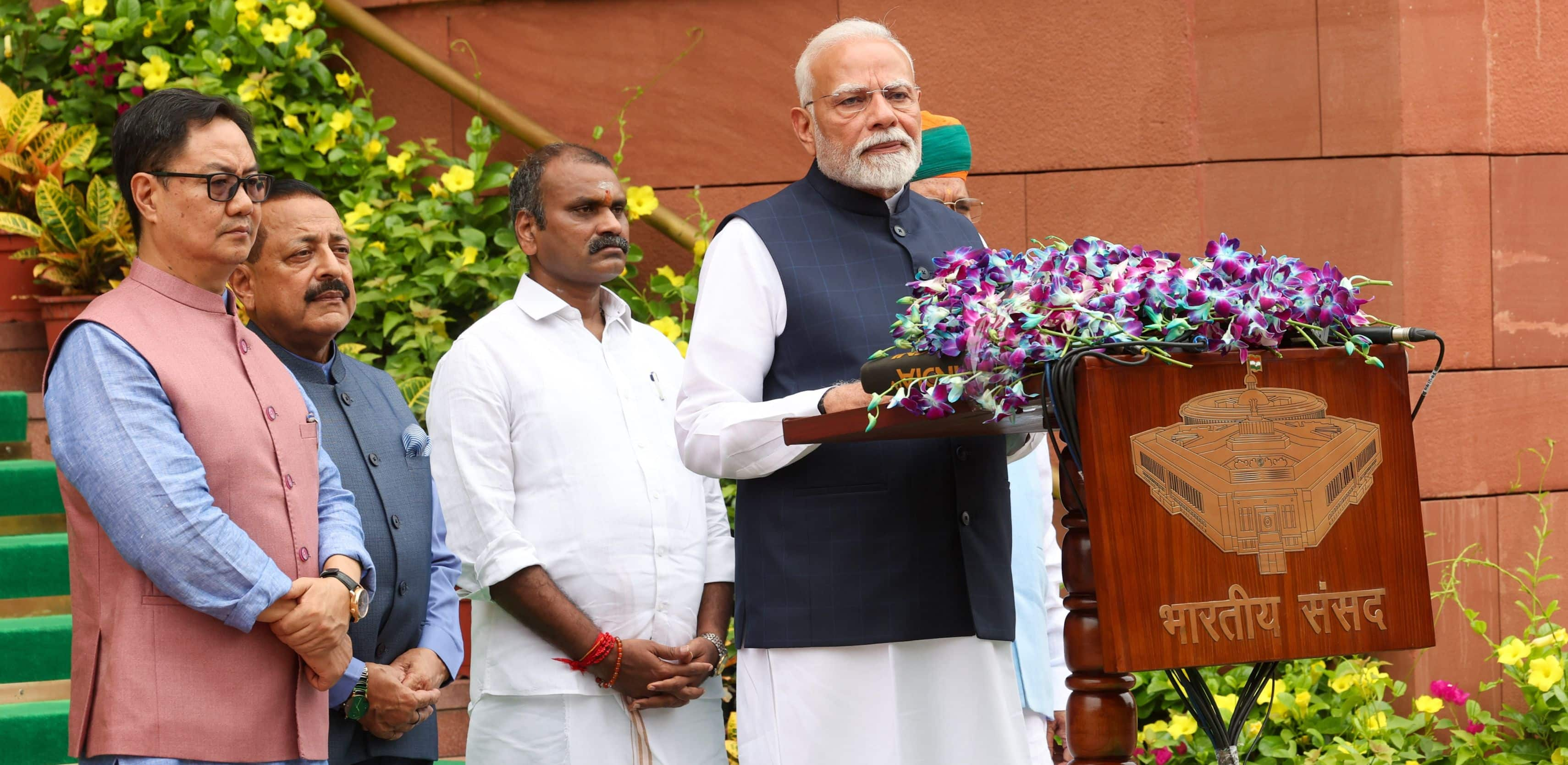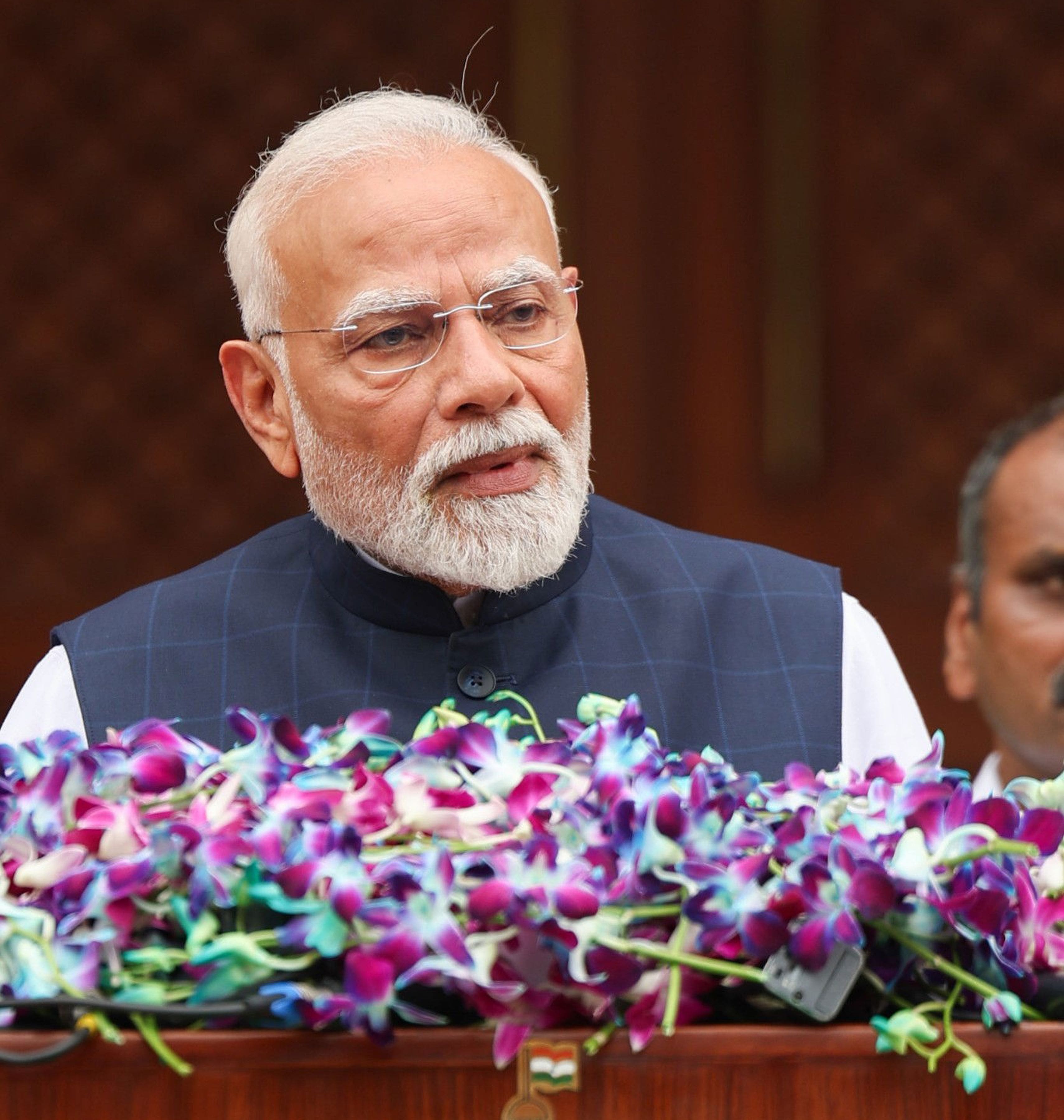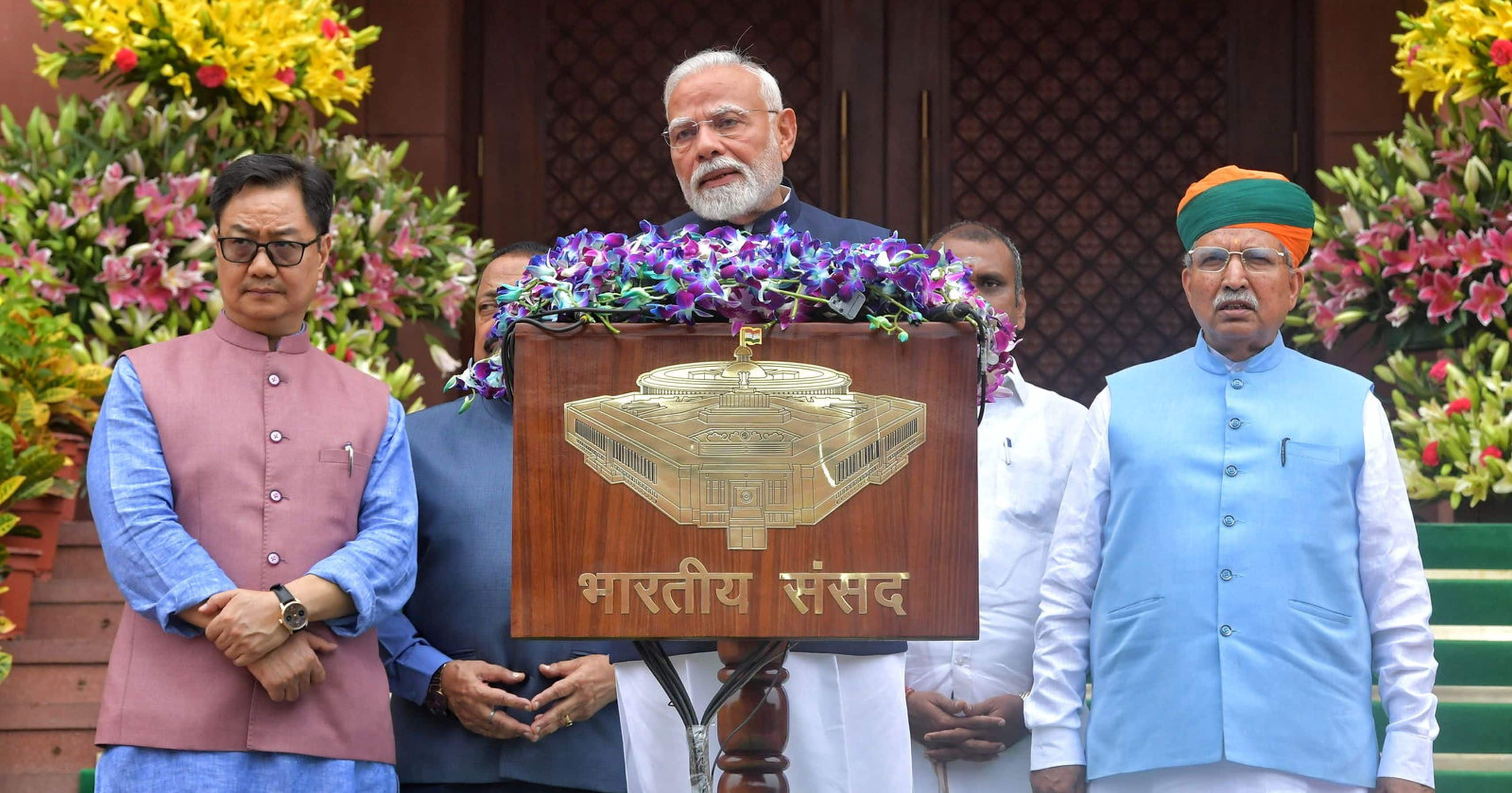Place : Gandhinagar Speech Date :14-04-2011
- The story of the Gujarat earthquake is about how a determined community extricated itself from the debris and created a better life for themselves.
- Gujarat State Disaster Management Authority [GSDMA] was created as a permanent body not only to look at reconstruction, but also to undertake long-term disaster management in the state.
- Gujarat Earthquake Reconstruction and Rehabilitation Program (GERRP) is one of the most comprehensivereconstruction programs ever undertaken in the country.
- It is said that disasters create an opportunity to “build back better”.
- Gujarat understood this and organized the entire reconstruction program towards converting the crisis into an opportunity.
- Gujarat reconstruction program become not only a successful program but also a model for many other reconstruction programs in India and Asia
Hon. Vice Chairman of National Disaster Management Authority, Shri M. Shashidhar Reddy, Hon, Minister of Revenue & Disaster Management, Smt. Anandiben Patel, Bhishma Pitha of Indian Earthquake Engineering, Dr. A. S Arya, other dignitaries on the Dias, experts from different parts of the world, Secretaries, members of various disaster management authorities of different state governments, Ladies and Gentlemen,
This Conference is held to commemorate the tenth anniversary of the occurrence of Gujarat Earthquake. It is also held at a crucial time when disasters are increasing all over the world and warrant better understanding of reconstruction and rehabilitation processes. Earthquake in New Zealand, & triple disaster of Japan – Earthquake, Tsunami and Nuclear, highlight the need for understanding reconstruction and rehabilitation and to learn lessons from each other's experiences.
Hence GSDMA has organized this Conference at an appropriate time inviting experts who participated in different reconstruction programs all over the world. In this Conference, we are going to discuss not only the reconstruction experiences of Gujarat, but also Latur (Maharashtra) and Tamil Nadu. We are also going to discuss the reconstruction experiences of China, Indonesia, Kashmir, Bihar, Japan, Colombia, New Zealand, Iran & USA to learn lessons from each other.
On behalf of Government of Gujarat, I welcome the experts and delegates from different parts of the world who are here to share their experience. In this speech, I am not going to discuss about the numbers, facts and figures, some of which were already discussed by my previous speakers. I will focus on the spirit and resilience of the people of Gujarat that enabled it to emerge stronger and better after the earthquake.
The 2001 earthquake was a testimony to the power of nature and a test of resilience of people of Gujarat. The story of the Gujarat earthquake was only nominally a tale of the death, destruction and dislocation that followed that fateful Republic Day in 2001. The real story is about how a determined community extricated itself from the debris and created a better life for themselves.
The earthquake was not only the worst disaster to have occurred in Gujarat in 180 years, but the area impacted was also very large. Kutch district, which was worst affected, is bigger than the states of Kerala and Haryana put together. The earthquake occurred while Gujarat was reeling under second successive year of drought. The challenges were many.
The need of the hour was to achieve balanced and sustainable recovery in the earthquake affected areas covering all aspects of human need. A need was also felt for a paradigm shift from the conventional approach of response post disaster to mitigation and preparedness against disasters.

There were great challenges ahead to conceptualize a program, which can address all important concerns including providing safe and good habitat to affected people, restoring livelihood, putting excellent infrastructure, etc. that arose from the earthquake. Further, balancing the short-term requirements and long-term vision in a comprehensive reconstruction programme was a challenge in itself.
Gujarat has been prone to natural disasters but every time a disaster occurred, the State had bounced back turning adversity into a development opportunity and the earthquake of 26th January 2001 was no exception.
Gujarat Earthquake Reconstruction and Rehabilitation Program (GERRP) is one of the most comprehensive reconstruction programs ever undertaken in the country. It was not only the biggest reconstruction program in terms of number of houses and infrastructure reconstructed, but also in terms of the geographical area and components included in the reconstruction.
The State Government designed the reconstruction programme as a comprehensive multi-sector program, aimed at time bound rehabilitation of the people affected by the earthquake through provision of housing, social amenities, infrastructure, preparing the people to face disasters through community participation and multi hazard preparedness programs, human resource development; and livelihood support based on sustainable economy and ecology.
The diversity required in the program can also be adjudged by the geographical spread of the destruction. Unlike other reconstruction programs of similar catastrophe elsewhere, the affected habitats in Gujarat were located not only in rural areas but in urban areas as well, which demanded different strategies for restoration. Majority of the affected population was illiterate and thus posed a big challenge of communication between communities and government.
The reconstruction program was also conceived with a clear vision in mind i.e. to Build Back Better.
It is said that disasters create an opportunity to “build back better”. Gujarat understood this and organized the entire reconstruction program towards converting the crisis into an opportunity.
The policy formulation, implementation and institutional mechanisms set up aimed at converting the adversity into an opportunity. If we had aimed at reconstructing what was damaged, it would have been done in half the time which had taken and it would have been less than half of the money spent on reconstruction. In fact what we aimed was the transformation of the affected areas using this opportunity. I would say, if you look at our total reconstruction cost, approximately half of it would be for reconstruction and rest would be for new construction. That is the outstanding feature of Gujarat reconstruction.
If you go to Kutch today you will find that the 4 urban towns of Kutch which was totally devastated has emerged into scientific ultra modern towns which showcase our efforts. We proved that adversity could really be translated into an opportunity.
What is important is not transforming adversity into opportunity, but how we did it. The first and foremost is creating of institutional mechanisms. Gujarat State Disaster Management Authority [GSDMA] was created as a permanent body not only to look at reconstruction, but also to undertake long-term disaster management in the state. The reconstruction of the 4 devastated towns in Kutch with ultra modern infrastructure was undertaken by Gujarat Urban Development Co. New Area Development Authorities were created to ensure better town planning and long-term development planning. We created an Advisory Council to advise the Government on issues concerned with policy decisions. All these institutional mechanisms were first of its kind in the reconstruction history of India. Without these innovations, the current feat would not have been possible. Gujarat reconstruction program become not only a successful program but also a model for many other reconstruction programs in India and Asia.

When Tamil Nadu Tsunami occurred, Gujarat was one of the first states not only to respond with relief materials but also helped them by providing our guidelines and informing them about how the reconstruction was undertaken in Gujarat. A special team of officers from Gujarat went to Tamil Nadu and Andaman & Nicobar Islands and made presentations and handed over guidelines, procedures and systems which were put in place in our reconstruction and Tamil Nadu followed many lessons from Gujarat Reconstruction.
During this Tsunami which affected not only Gujarat but also entire Asia, a High Delegation from Sri Lanka came and met me and discussed with us regarding some of the best practices undertaken in Gujarat.
- When J&K earthquake occurred, a High Level Delegation from J&K also came to study the Gujarat Reconstruction Program.
- In 2003 when Bam earthquake occurred, Iranian Government was provided with housing reconstruction guidelines developed by us.
- Apart from these, High level Delegations from Afghanistan and Bangladesh also come to study Gujarat reconstruction program.
- After Pakistan earthquake, the policy guidelines from Gujarat were sent to Pakistan. Lessons learnt in Gujarat played a vital role in shaping reconstruction program in Pakistan.
- Thus the impact of the Gujarat program can be seen far and wide not only for its outcome, but also for the methods, systems and procedures put in place which could be replicated in other parts of the world.
- When Tsunami occurred Gujarat supplied drinking water to Andaman & Nicobar. Tents were provided from Gujarat. A train load of relief materials were dispatched from Gujarat to Tamil Nadu, Pondicherry and Andaman & Nicobar Islands.
- During 2008 Bihar floods, Gujarat send a team of rescue men, equipments and boats by air to help the affected and Gujarat was the only state to respond in such an effective manner.
- In the recent bridge collapse in Kota, a special request was made by Rajasthan Government to send teams from Gujarat and our fire and rescue team with equipments was sent to Kota.
- We have not only built capacity at the Mega cities and Corporations, but our capacity building exercise has peculated down to Nagarpalikas and Villages. Gujarat has provided fire fighting equipments and rescue equipments to all the Nagarpalikas in Gujarat and Gujarat is the only state to do so in the entire country. We have built capacity not only at the Municipality level but also down to the village and taluka levels for flood rescue which is a taluka and village level problem. Rescue boats, lifebuoys, life jackets, and ropes have been provided to the talukas as well as to select areas which face the problem. Adequate training and equipments have been provided to fire and rescue services and also to volunteers.
- Disaster Management Plans have been prepared at State, District, and Taluka and even at village levels. The State Disaster Resource network (SDRN) at the level is capturing all the resources available with government as well as in terms of manpower, machinery and expertise to the village level. The Hazard Risk Vulnerability Atlas, the first of its kind prepared in the country is a very handy tool for looking at hazard vulnerability and composite risk going down to sub-taluka level. This Atlas is a unique tool that can be effectively used for all the four aspects of disaster management: prevention, preparedness, relief and rehabilitation.
- Gujarat is the first state in the country to successfully complete a scientific microzonation to plan for mitigating and avoid future disasters. Gandhidham which is a fast growing area is vulnerable to natural disasters was taken up for this study and microzonation has been completed successfully.
- Gujarat is again looking at safety at all levels - let me give only one example: the example of school safety. In order to provide an understanding of disaster preparedness and mitigation, the syllabus of schools were revised to include lessons on disaster management. A special school safety initiative was undertaken through NGO to train large number of children and teachers at school level and conduct mock drills. As a third phase fire safety equipments have been provided to all the government schools at government expenses. Gujarat is the first and only state in India to undertake such safety measures for school children.
- Apart from all the institutional mechanism we have created scientific instructions such as Gujarat Institute of Disaster Management (GIDM) and Institute of Seismological Research (ISR). It is fully operational with scientists and research scholars conducting studies on earthquakes, tremors, cyclones etc. In order to enable the studies we have set up 22 observatories and put in place 40 Strong Motion Accelorographs in different parts of the state. ISR helps us to know the occurrence of even a small tremor anywhere in the world within minutes – for example, we could see and know what happened in Japan within Tem minutes of the occurrence of the disaster.
Gujarat experience stands out from other reconstruction programs mainly in four aspects:
- Successful owner driven reconstruction of houses,
- Town Planning of the four worst effected cities in Kutch,
- Long-term disaster initiatives undertaken, and
- Economic transformation of Kutch.
Similarly, as I told you earlier, Gujarat experience helped other countries and states. Learning lessons from each other is very important if we do not want to reinvent the wheel again and again. As the learning will help to avoid repetition of mistakes and improve upon what others have already done. In this context, this Conference holds a great significance.
Experts have come here not only from different countries, but also from different continents. Experts who have either participated in reconstruction or studied reconstruction in different geographical, socio-economic and political settings are here to share their experiences. This mutual sharing, I hope will lead to preparation of a document that will guide the policies and implementation process of reconstruction programs world over, though huge volume of research has been undertaken with respect to reconstruction and every reconstruction is going to be a challenge. No reconstruction program can be duplicated. We have to learn from each program and modify it to suit the affected people's socio-economic and political conditions, despite some fundamentals and factors will remain common for developed and developing countries.
Hence I wish this conference a great success and its objective of colleting major lessons applicable for other reconstruction programs. Before I conclude, I would like to say only one thing, people think that reconstruction program succeeds because money flowing into the affected areas, but in reality, it is the commitment of the stakeholders, state and national government and the people themselves play an important role in bringing about transformation in affected areas. Gujarat reconstruction program stands a testimony in this endeavor.
Increasing urbanization is leading to more and more urban disasters, particularly urban floods. Due to unplanned development and improper land use planning & increase in population and urban centers lead to urban flooding. Mitigating and preventing disasters in urban areas is going to be a major challenge of future governments and understanding its importance, NDMA has prepared guidelines -“National Disaster Management Guidelines – Management of Urban Flooding”, which I am happy to launch in Gujarat on this auspicious day. I congratulate NDMA for bringing out these guidelines. Government of Gujarat is cognizant to urban flooding and is taking appropriate steps. A study on the reasons of floods and mitigation measures to be undertaken in four major urban cities – Ahmedabad, Baroda, Rajkot and Surat has been recently completed. GSDMA has also done a special study on flooding of Jamnagar. Mitigation plans will be prepared based on the studies will also take into consideration the guidelines provided by NDMA to avoid urban floods in Gujarat.
Today is a very important day for all the Indians. Today is the 120th birth anniversary of Dr. Babasaheb Ambedkar, the architect constitution of India, who advocated equity, dignity and freedom for all the human being regardless cast, creed, color and economic conditions. Reconstruction programs should also aim at recovery of all the effected people regardless their caste, creed and color. Gujarat has successfully achieved this even after the aftermath of the disaster. This workshop on the day of Dr. Ambedkar's birth anniversary carries the message of dignity, equity and freedom to all.
Experts tell us that the impact of disasters affect different sections of people differently. Poor and weaker sections are the most vulnerable in any disaster and they are worst affected. If Dr. Ambedkar's message of equity and social justice is realized, it will not only help better reconstruction, but also prevent occurrence of differently impact in disasters. It will help build capacity and resilience to the most vulnerable people of developing countries. Today my message in this conference is “let us take the vision of Dr. Ambedkar and build a society with equity and social justice in which one and all will be capable of preventing and mitigating the impact of future disasters”.
I congratulate all the participants here and wish the conference all the success.
















